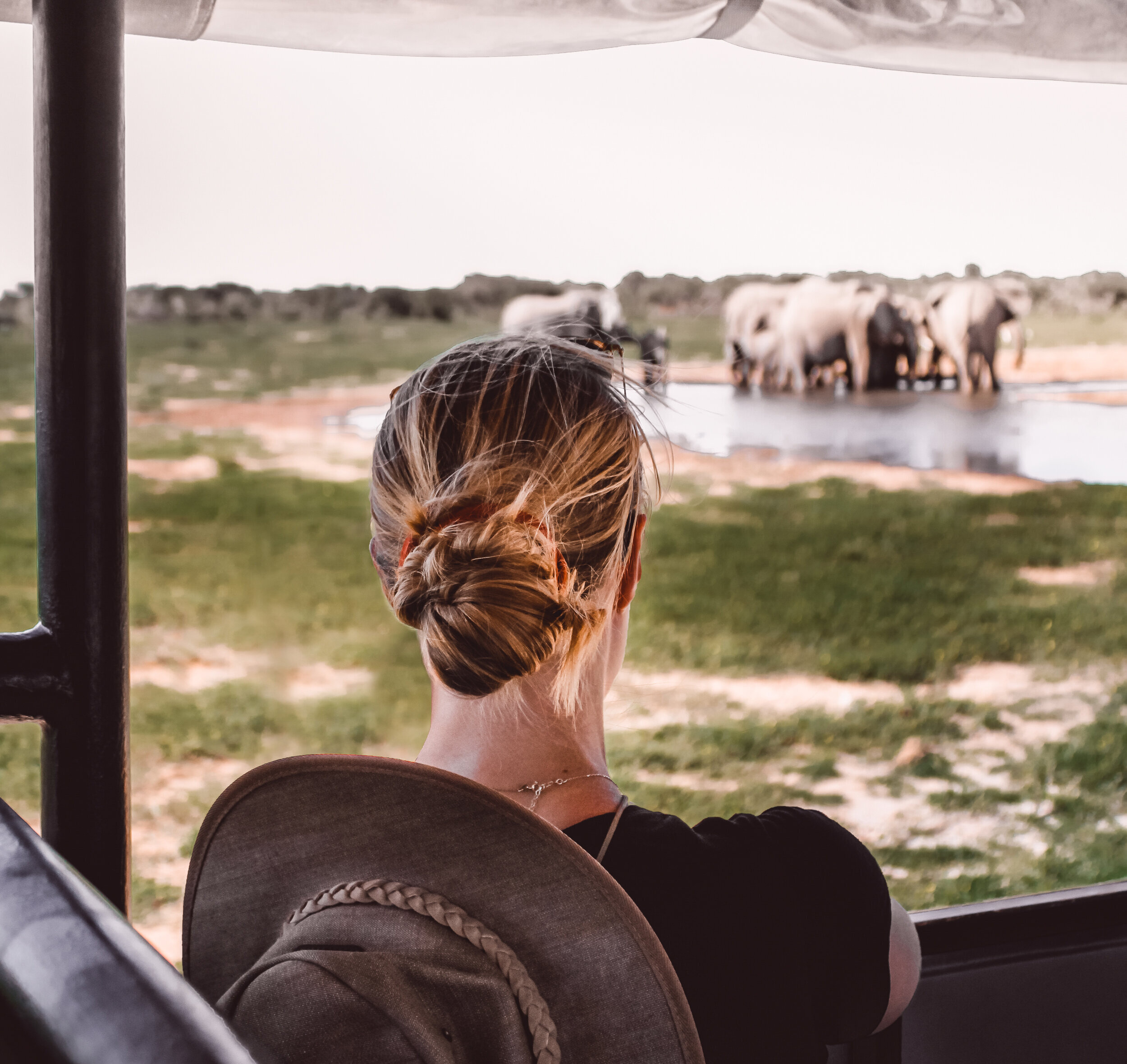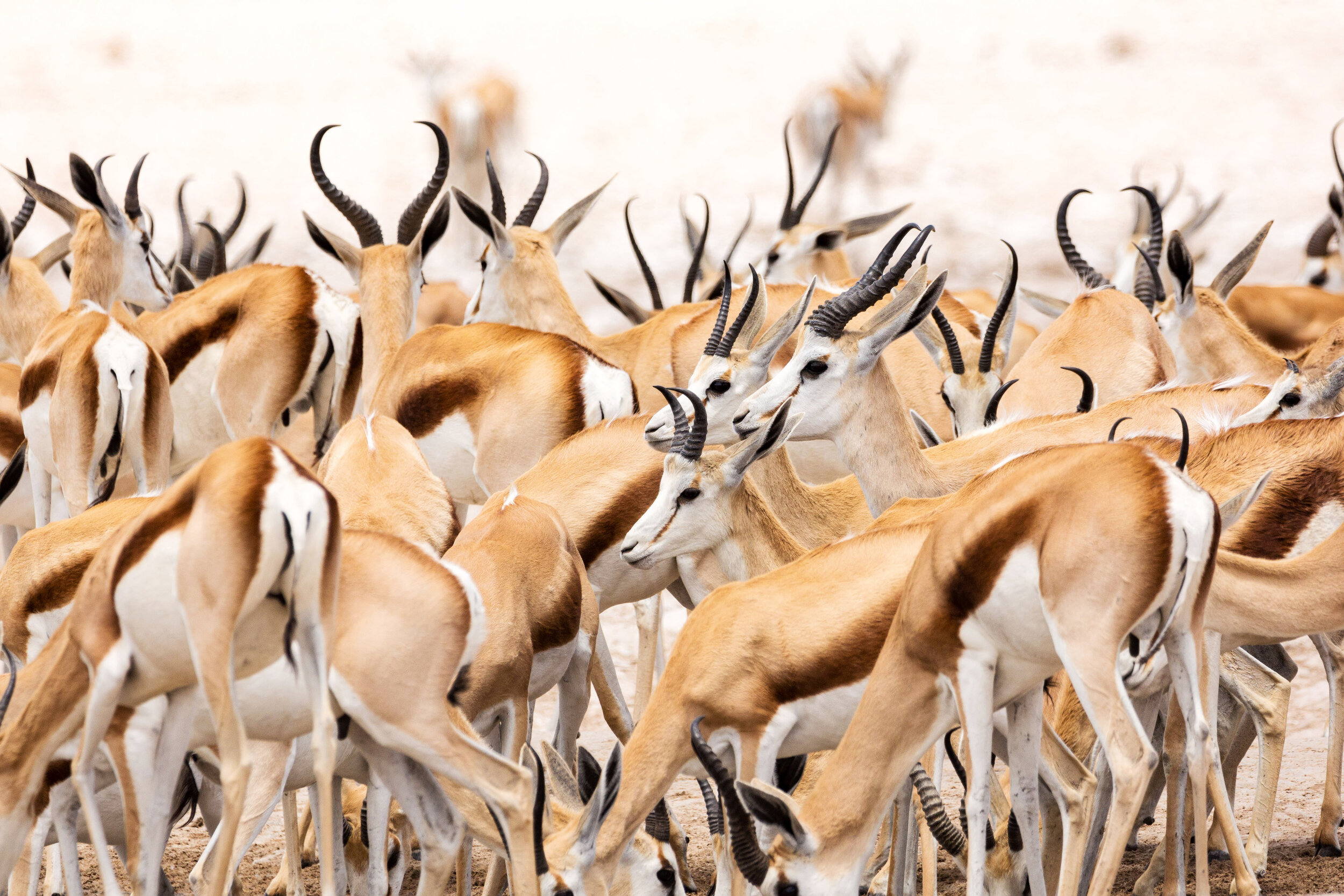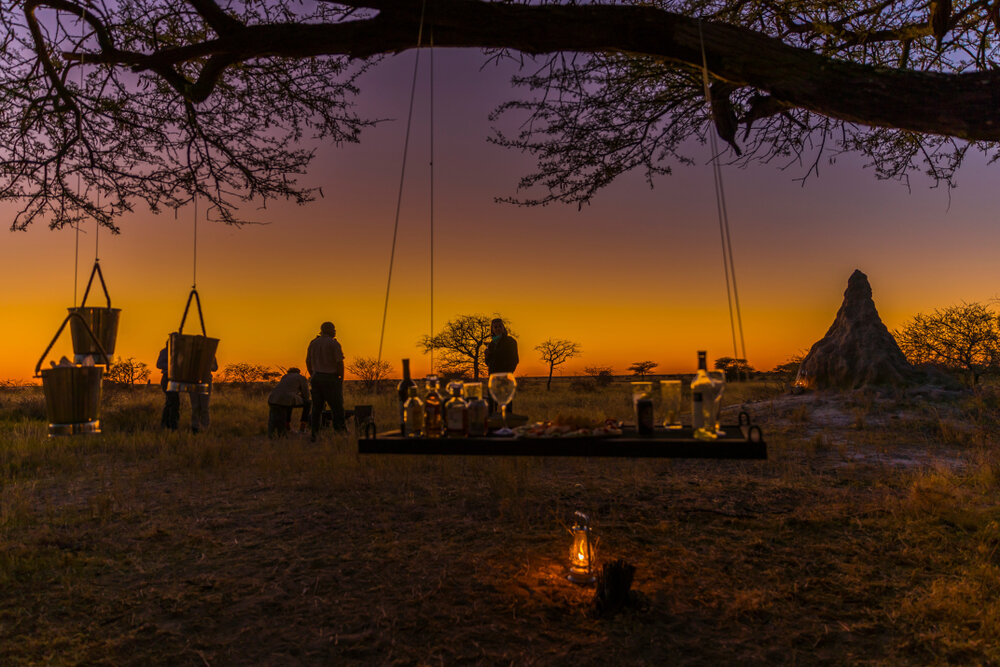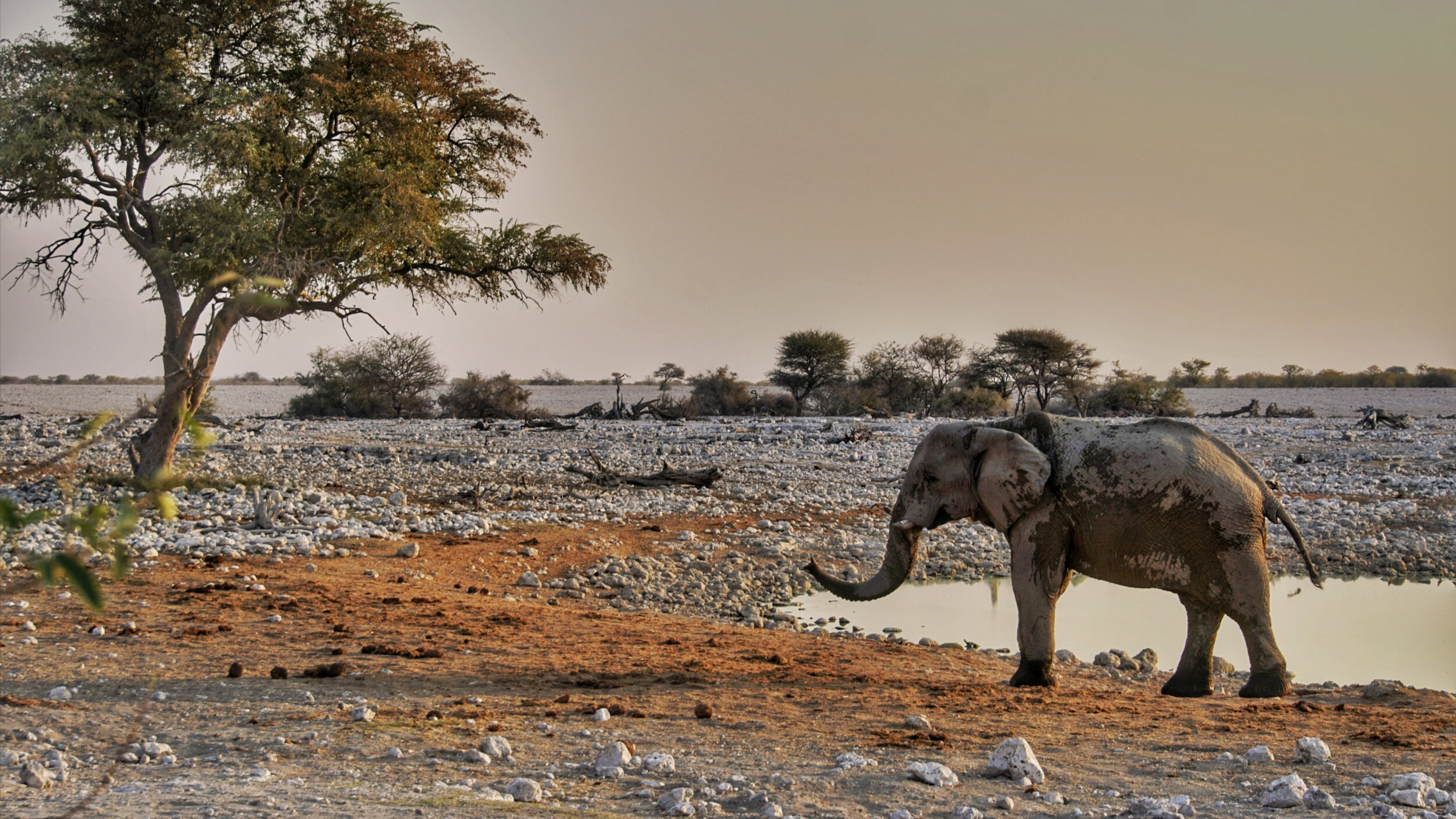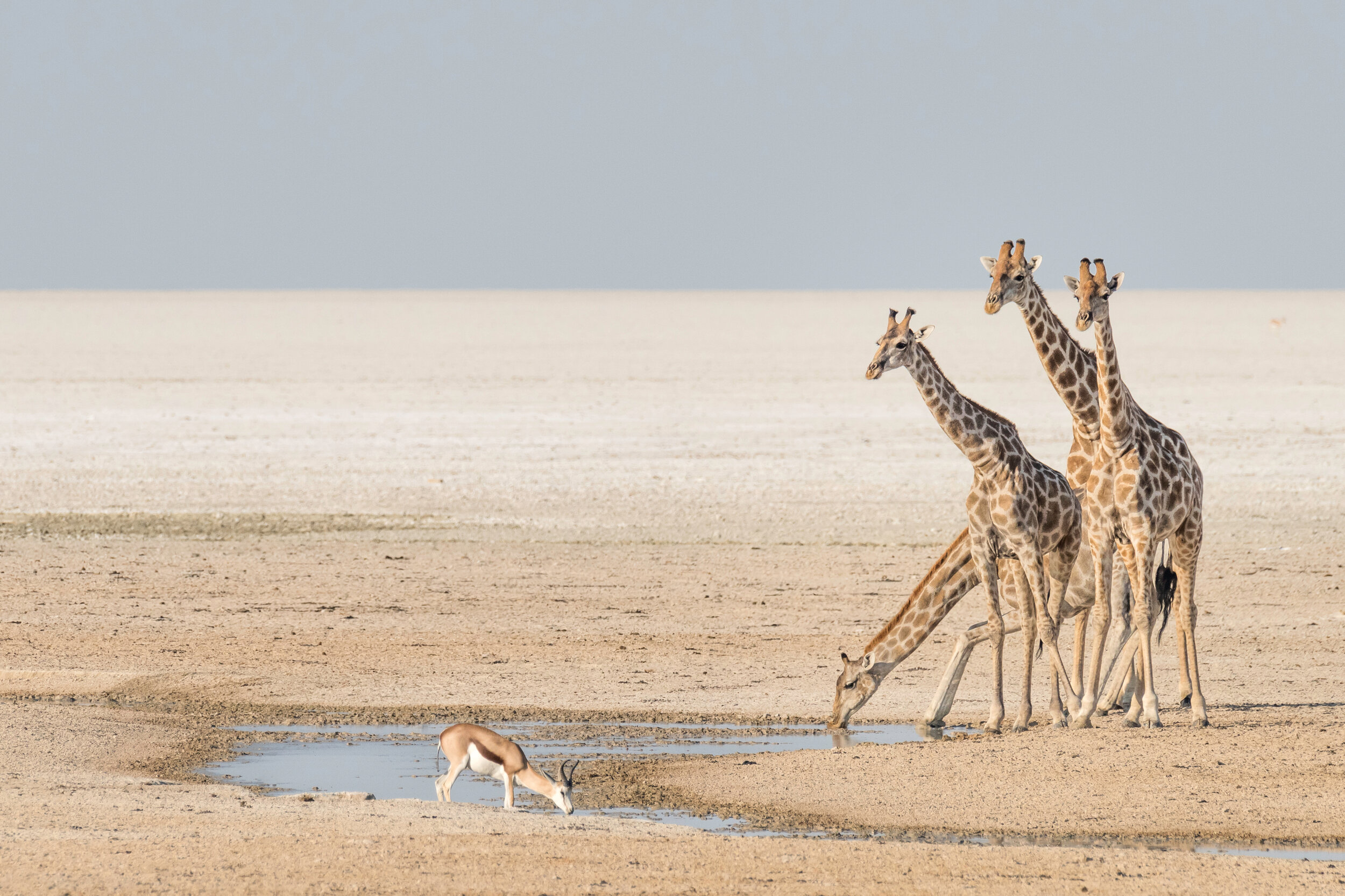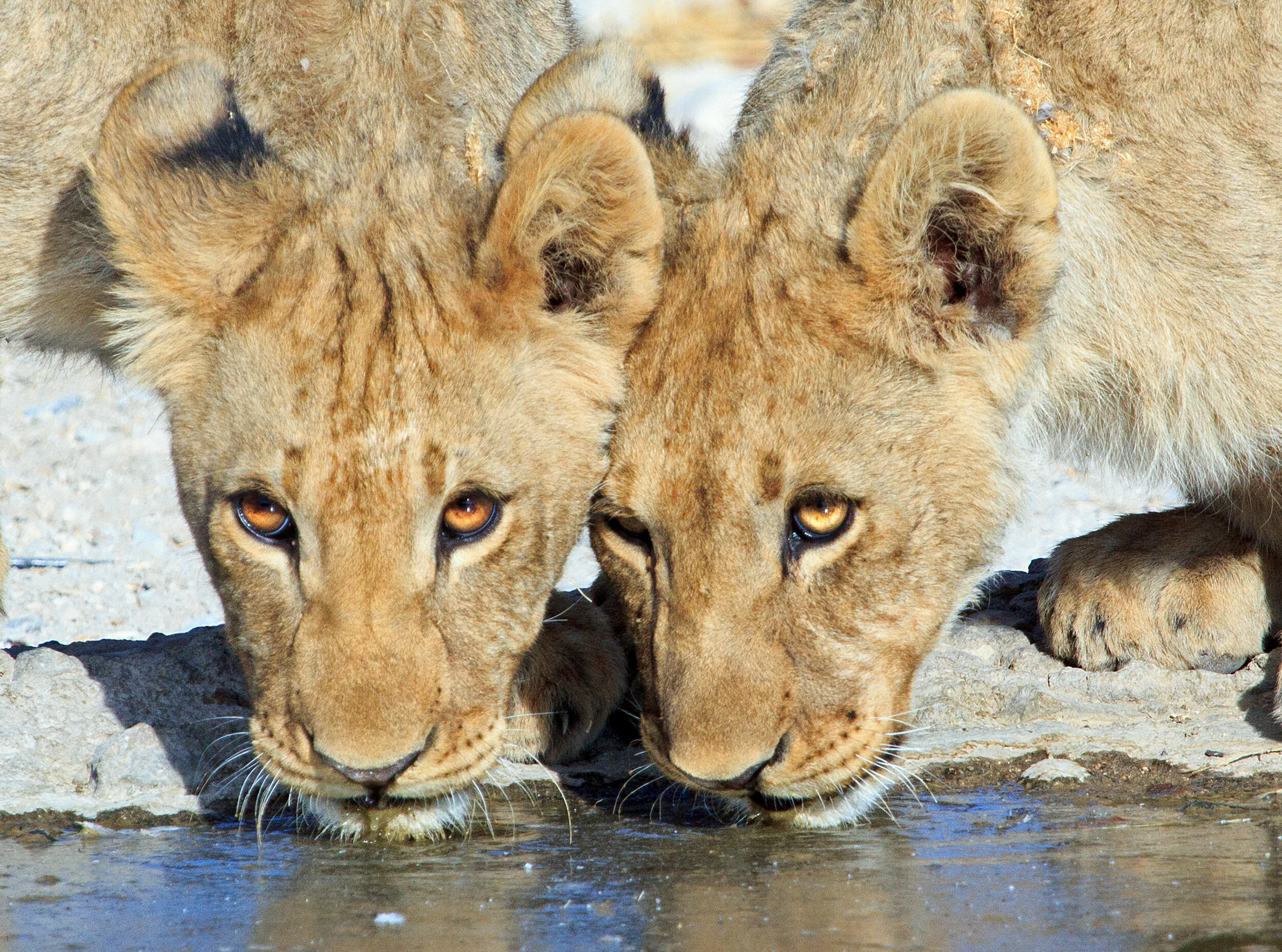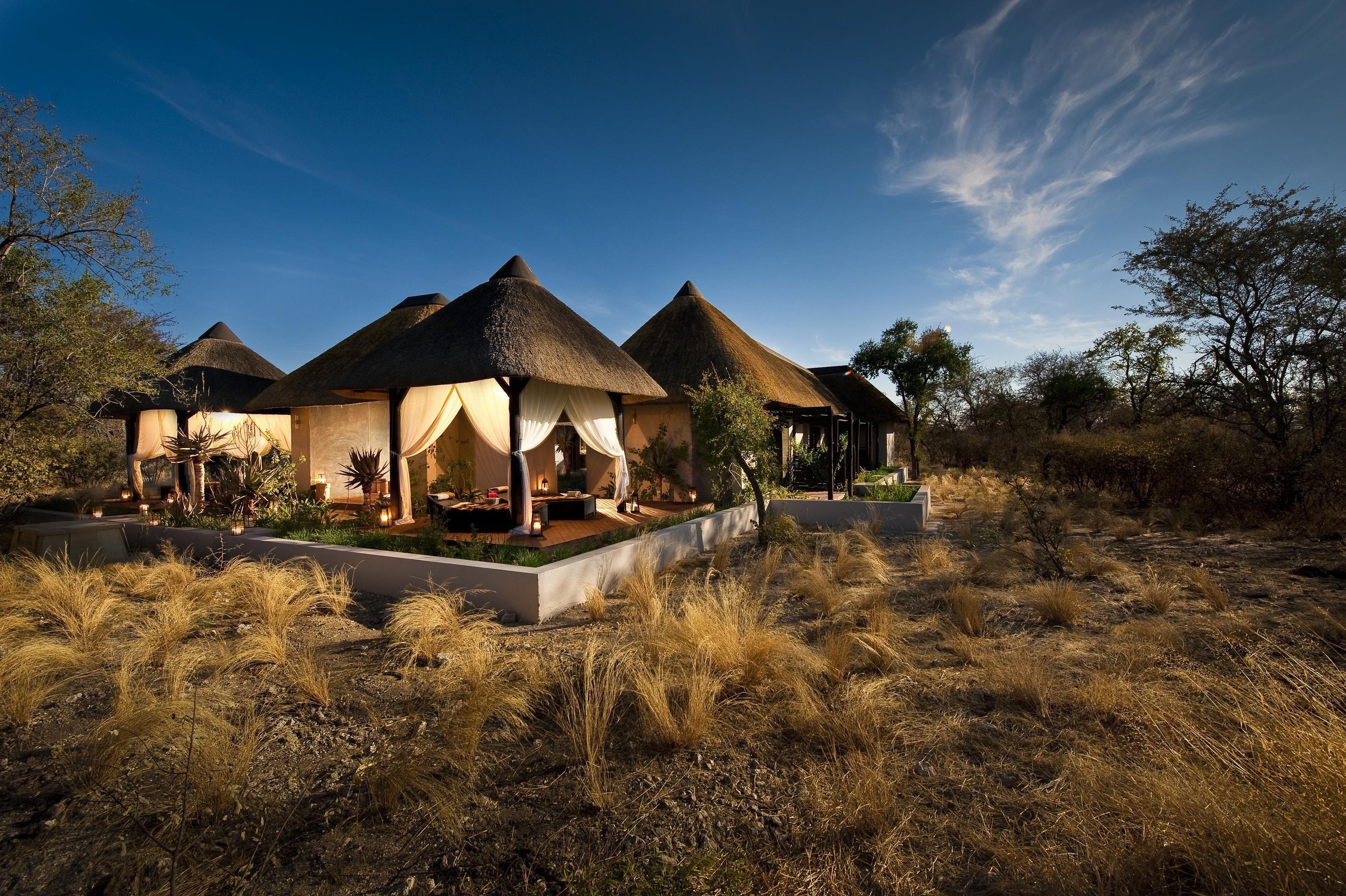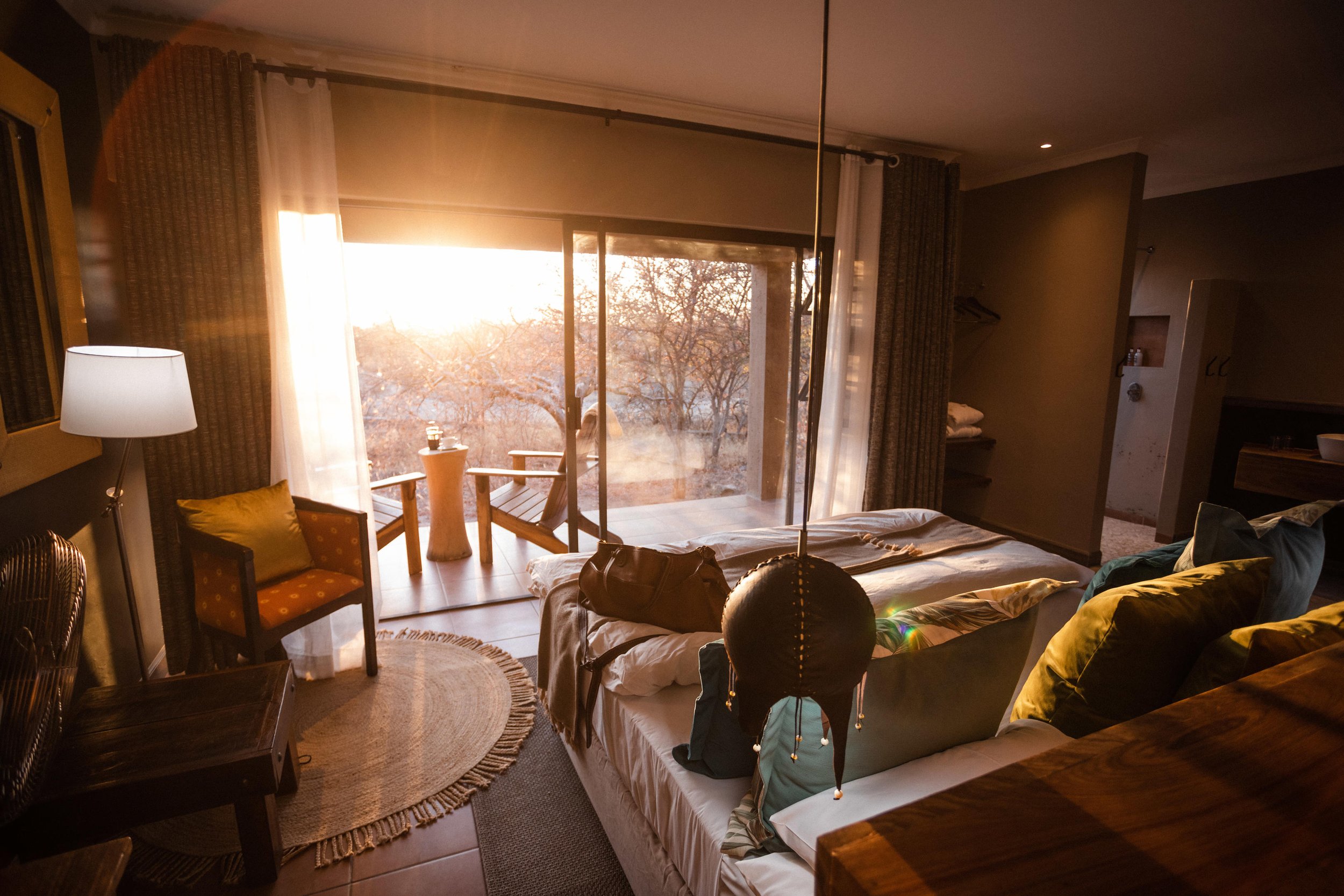A Complete Guide to Etosha
Written by Nina van Schalkwyk
Etosha National Park is perhaps Namibia’s most famous destination, excluding Sossusvlei of course. What it may lack in iconic dunes, it by far makes up for in abundance of animals and wildlife encounters, stunning scenery and the freedom to explore it all by yourself. Named after the massive Etosha Pan that makes up a large portion of its square foothold, the National Park is a hotspot for elephants, lions, leopards, zebras and more. The name Etosha comes from the local Oshindonga language, in which it means “Great White Place”. Read on for the complete guide to Etosha National Park.
Getting there
Etosha National Park, or simply Etosha as the locals refer to it, is located in the central north of Namibia, about 5 hours’ drive north of Windhoek. You can drive straight through from Windhoek to the Andersson Gate, the most southerly point of entry into the park. A nice break awaits half-an-hour’s drive from the gate - Outjo, a little town with quite a lot of character. Andersson Gate is by far the most popular entry into the park, but there are 3 other gates, Galton, Von Lindequist and Nehale, which are located on the west, the east and the north-east respectively. You might decide to head out using any one of these gates to either explore Namibia’s famous Damaraland in the west or head up north-east to the wet and wild Zambezi Region.
All 4 of the gates open at sunrise and close at sunset, but remember that the same is true for all of the camps and resorts inside the park, which means that if you plan on sleeping inside the park you’d best arrive with enough time to fill out a couple of forms, pay the entry fee of €4,5 (N$80) and make your way to your camp.
Best time to go
The most popular season to go to Etosha is during the Namibian winter: June, July and August. And with good reason! When the environment in the park is dry, it means that the animals are more likely to congregate around the park’s many waterholes, making it easy viewing for visitors. In contrast, during the rainy season (late December to February), there is enough water in the wilderness and the animals are less likely to risk the dangers of being spotted by a predator at a waterhole.
Most visitors also prefer the cooler months in Namibia, because even though the nights can be quite chilly, the days are nonetheless sunny and warm. Namibian summers on the other hand can be quite hot, even at night, however this is also the time you’d find many special rates and discounts. If you are looking for more tips to save some cash, check out our blog post: 5 hacks for an affordable Namibia trip.
What to do
Self-drives and guided game-drives
The main drawing card for visiting Etosha National Park is the abundance of animals. Etosha is filled to the brim with 4 of the Big 5: Lions, leopards, elephants and rhinos. The best of it all is that you can see them from the comfort of your car. A self-drive through the park is a great activity because you get to be your own tour guide, deciding where to go and how long to stay at a waterhole. Just don’t forget the snacks and refreshments. Most lodges in and around the park offer guided game-drives that last about 4 or 5 hours, starting early in the morning or later in the afternoon.
Bush walks
Another activity that you might consider is a bush walk. Imagine the adrenaline rush of coming across a wild rhino with only your guide’s wits between you. Bush walks might be a little pricey, since only a few people take part at a time, and you have to be somewhat fit to enjoy it.
Spa and wellness
After a long day of roughing it out in the wild, it’s time to tame your inner-animal with much-needed pampering. Many lodges around Etosha offer spa services, but be sure to enquire well-ahead of time whether your accommodation of choice includes spa facilities.
Wildlife & Safari
Like we mentioned before, Etosha National Park is a great destination if you’re looking to stock up on animal sightings, not least because it is the home to 4 out of the Big 5. Yes, the African buffalo isn’t there, but with those dirty looks they love to give, you know they’re not too pleased about it either. Plus let’s not forget the thousands of zebras, springboks and other antelope; predators like cheetahs, hyenas and jackals; plus more bird and reptile species than you can wave a stick at.
In the wet season, the pan comes to life with birds from all over, but the most stunning sight is without a doubt the thousands of flamingos that descend onto the white expanse and lend it a truly exotic shade of pink. If an African safari is your dream, you can be sure that Etosha is a necessary and most certainly an unforgettable stop.
Accommodation
Before you hop on a plane headed for Namibia, let’s get your accommodation sorted. There are many establishments catering to guests visiting Etosha, but to save you the time and effort of researching all of them, we’ve made a little list of our favourites, ranging from really affordable to quite a treat.
Basic
Only 6.5 km from the Andersson Gate, the Etosha Trading Post should be your last stop before entering the park from the south, to fill up or buy snacks from the farm stall. Accommodation consists of campsites, and the private campsites each have their own ablution facilities, barbeque areas, shade, lights and a ton of electrical points. Plus, after a long day of game drives with them you can cool off in the camp pool.
Mopane Village Lodge
Located south of the Andersson Gate, the campsites and chalets at Mopane Village Lodge come standard with hot showers and access to the refreshing pool, restaurant and cocktails at sunset from the rooftop lookout. Guests can book a game drive with the lodge into Etosha and enjoy their specifically-adapted extra height vehicle for the best views.
Mid-level
Mokuti Etosha Lodge
Mokuti Etosha Lodge is a firm favourite among families and leaves nothing to desire. After a hot day in the park, just a short drive away through the Von Lindequist gate, the poolside bar is where most guests find themselves cooling off. There’s so much to do other than the expertly guided game drives: the spa, gym, snake park, pool room and tennis courts are all viable options to while away the day.
The Gondwana group is known to be quirky when it comes to their establishments and Etosha Safari Camp on the southern edge of the park is no different. Featuring a bar inspired by Namibia’s funky informal taverns known as ‘shebeens’, and with a restaurant in the style of the townships, every stay is sure to be interesting. Live music from the Etosha Boys entertain guests in the evenings while during the day professional game drives await.
Settled quite nicely between Okaukuejo and Outjo and known as an official checkpoint during the annual Put Foot Rally, Toshari Lodge manages to combine luxury with necessity. Lush green lawns, multiple swimming pools, a restaurant and bar, all surrounded by the bush. Plus, campers have full access to all of the lodge’s facilities.
Fancy
Onguma Etosha Aoba
Onguma Etosha Aoba is nestled within the private Onguma Game Reserve bordering the eastern edge of the park, and is completely unfenced, meaning wildlife come and go as they please around the lodge. Relax with massage therapy, go for an exhilarating bush walk or game drive, and learn about the work of Onguma’s anti-poaching unit and how they are protecting the reserve’s rhinos.
Mushara Bush Camp is also located in a private game reserve. The tented en-suite rooms all enjoy the privacy of the bush with a veranda to sip that first cup of coffee. At night, sundowners by the bonfire under the stars are a must, followed by mouth-watering culinary experiences. The lodge is only 10 km from the Von Lindequist gate and its guides will get you into the park first thing in the morning for a game drive.
Another of Gondwana’s establishments, the King Nehale Lodge serves as jumping off point not only for guests to visit Etosha but also to explore Namibia’s ‘O-region’, the land of the Oshiwambo. The lodge interior is clearly inspired by the colourful Oshiwambo culture and each chalet has its own splash pool and views over Etosha’s Andoni plains. An added bonus: private access to the Ontalelo Outpost, a hideout at a secluded waterhole inside the park that is only available to lodge guests.
How to include Etosha in your Namibian adventure
Etosha National Park sets the scene for Namibia’s foremost wildlife showcase. Here are a few of our favourite trips to take you there:
Discover the country’s most famous landscapes on this 13-night tour that takes in the country’s biggest highlights. From desert dunes to jagged canyons and epic Big 5 wildlife encounters, this is Namibia at its finest!
Namibian Wildside: Etosha to Zambezi
This voyage will take you from dramatic salt pan scenery in Etosha to the green rivers of the Zambezi Region and back again, gobsmacking wildlife sightings assured! Marvel at desert-adapted animals and admire elephants and hippos in the waterways of the Kwando River.
Begin your trip at the world’s most famous dunes at Sossusvlei, then head to salty Swakopmund before trading the sand for the rocky moonscape of Damaraland. To round up, end your trip with an exciting game drive through wildlife-brimming Etosha.
Insider Tips
If you are a keen photographer, bring along a small beanbag that you can use to stabilize your camera on your car’s window sill. And don’t be tempted to change lenses on a game drive - Etosha is way too dusty to take the chance.
There are restaurants and shops at all the resorts inside the park, except Olifantsrus, but bring along your essentials (e.g. mosquito repellent, beer) as they sometimes might not be in stock.
Never (ever!) get out of your car inside the park. Wild animals are just that - wild. And unpredictable to boot.
Even though Namibia is a desert country, nights can get pretty cold, so remember to pack a warm jacket and closed shoes.
Now that you know all there is to know about Namibia’s Etosha National Park, the next step is to get there. Not sure where to start? Subscribe to our newsletter to know more.





